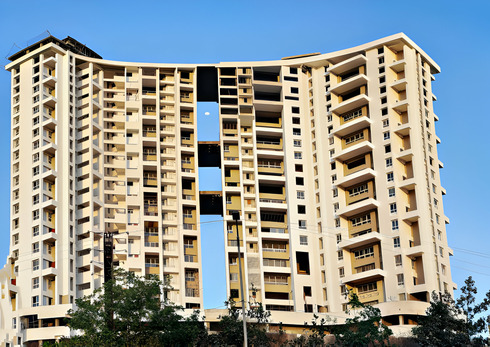
A burst pipe, leaking roof, or a malfunctioning appliance are just a few examples of the unsettling and disruptive events that can occur when water damage occurs in a condominium. It is important to act quickly to stop additional damage and expedite the healing process. This comprehensive guide is intended to give condo owners, property managers, and residents detailed insights on how to navigate the challenges of dealing with water damage in a condo setting, from immediate response measures to long-term restoration strategies.
Due to shared structures and common areas, water damage poses special challenges for condos. This guide is intended to equip people with the information and resources they need to evaluate, mitigate, and repair water damage in a condo setting, encouraging a proactive approach to property protection and resident safety.
See also our post on A Comprehensive Guide on Preventing Water Damage in an Urban Environment
I. Immediate Response and Safety Measures
1. Shut Off the Water Source
- Locate the Water Shut-Off Valve: Identify the main water shut-off valve for the affected unit.
- Isolate the Source: Turn off water supply to the specific area causing the damage (e.g., a leaking appliance).
2. Electricity Safety
- Turn Off Power: Disconnect electricity in the affected area to prevent electrical hazards.
- Electrical Appliances: Avoid using electrical appliances in water-damaged areas until it’s deemed safe.
3. Evacuation and Alerting Neighbors
- Notify Neighbors: Inform neighboring units about the water damage to prevent further spread.
- Temporary Relocation: If necessary, consider temporary relocation until the situation is under control.
- Emergency Services: In extreme cases, contact emergency services for immediate assistance.
4. Documenting the Damage
- Photographic Evidence: Take detailed pictures and videos of the affected areas for insurance purposes.
- Written Documentation: Create a comprehensive record of the damage, including descriptions and dates.
- Contact Insurance: Notify your insurance company promptly and provide them with the documentation.
5. Initial Drying Measures
- Remove Standing Water: Use towels, buckets, or a wet/dry vacuum to remove standing water.
- Enhance Ventilation: Increase airflow by opening windows and doors to aid in drying.
- Dehumidifiers: Place dehumidifiers strategically to reduce moisture levels.
II. Assessing the Extent of Water Damage
1. Categorizing Water Damage
- Category 1 (Clean Water): Originates from a clean source, such as a broken water supply line.
- Category 2 (Gray Water): Contains contaminants, like washing machine discharge.
- Category 3 (Black Water): Highly contaminated water, often from sewage backup or flooding.
2. Classifying Damage
- Class 1: Limited damage with minimal water absorption.
- Class 2: Significant damage with a fast rate of evaporation.
- Class 3: Widespread saturation, affecting walls, ceilings, and insulation.
- Class 4: Deep water absorption requiring specialized drying techniques.
3. Structural Assessment
- Walls and Ceilings: Inspect for visible damage, such as discoloration or warping.
- Flooring: Check for water seepage, swelling, or damage to carpets, hardwood, or tiles.
- Electrical Systems: Assess for potential damage to wiring and outlets.
4. Hidden Water Detection
- Moisture Meters: Use handheld meters to measure moisture levels in various materials.
- Infrared Thermography: Utilize thermal imaging to identify hidden moisture pockets.
- Professional Assessment: Seek the expertise of water damage restoration professionals for a comprehensive evaluation.
5. Mold Risk Assessment
- Mold Inspection: Conduct a thorough assessment to identify potential mold growth.
- Air and Surface Sampling: Collect samples to assess mold presence and types.
- Immediate Mitigation: Address potential mold growth promptly to prevent further damage.
See also our post on A Comprehensive Guide on How to Save Musical Instruments from Water Damage
III. Mitigation and Restoration Planning
1. Water Extraction
- Professional Assistance: Engage water damage restoration professionals for efficient water extraction.
- Advanced Equipment: Utilize industrial-grade pumps and vacuums for thorough water removal.
- Timely Intervention: Swift water extraction mitigates further damage and reduces the risk of mold growth.
2. Structural Drying
- Air Circulation: Enhance airflow using fans to accelerate evaporation.
- Dehumidification: Control humidity levels to prevent secondary damage.
- Heating Systems: Introduce heat to expedite the drying process in colder environments.
3. Salvaging Personal Belongings
- Content Assessment: Evaluate the condition of furniture, electronics, and personal items.
- Professional Cleaning: Employ specialized cleaning methods to salvage items.
- Document Restoration: Prioritize the restoration of important documents.
4. Repairs and Reconstruction
- Wood and Drywall Replacement: Address damaged structural elements promptly.
- Flooring Repairs: Repair or replace damaged flooring materials.
- Roof and Plumbing Repairs: Seal leaks and ensure the integrity of roofing and plumbing systems.
5. Sanitization and Deodorization
- Antimicrobial Treatments: Apply treatments to prevent bacterial growth.
- Deep Cleaning: Thoroughly clean and sanitize affected surfaces and materials.
- Odor Neutralization: Use specialized products to eliminate lingering odors.
IV. Working with Condo Management and Insurance
1. Notify Condo Management
- Immediate Notification: Inform the condo management promptly about the water damage.
- Follow Protocols: Adhere to condo association rules and protocols for dealing with emergencies.
- Coordinated Efforts: Work collaboratively with management to minimize overall impact.
2. Communicate with Insurance
- Prompt Reporting: Report the incident to your insurance company as soon as possible.
- Documented Claims: Provide detailed documentation and photographic evidence to support your claim.
- Insurance Adjuster: Cooperate with the insurance adjuster during the assessment process.
3. Understand Coverage
- Policy Review: Thoroughly review your insurance policy to understand coverage and limitations.
- Clarification: Seek clarification from your insurer regarding any uncertainties.
- Additional Coverage: Consider additional coverage options for specific risks.
4. Restoration Cost Estimates
- Detailed Estimation: Obtain detailed cost estimates for the restoration process.
- Professional Quotes: Seek quotes from reputable water damage restoration professionals.
- Comparison: Compare costs and services to make informed decisions.
5. Follow-Up with Insurance Adjustments
- Documentation Submission: Submit additional documentation as requested by the insurance adjuster.
- Claims Review: Participate in the claims review process and provide any necessary information.
- Advocate for Fair Settlement: Advocate for a fair and timely settlement based on the documented damage.
V. Post-Restoration Care and Preventive Measures
1. Ongoing Monitoring
- Regular Inspections: Schedule periodic inspections to ensure the effectiveness of restoration efforts.
- Moisture Checks: Use moisture meters to monitor moisture levels in key areas.
- Early Intervention: Address any signs of recurring water damage promptly.
2. Preventive Maintenance
- Regular Roof Inspections: Schedule routine inspections to identify and repair potential roof leaks.
- Plumbing Checks: Regularly inspect plumbing systems for leaks or vulnerabilities.
- Sealing and Weatherproofing: Apply sealants to vulnerable areas to prevent water intrusion.
3. Emergency Preparedness
- Resident Education: Educate residents on emergency response procedures for water-related incidents.
- Emergency Kits: Encourage residents to have emergency kits with essentials.
- Communication Protocols: Establish clear communication channels for emergency notifications.
4. Collaborative Efforts
- Community Meetings: Arrange meetings to discuss water damage prevention strategies with residents.
- Collaboration with Professionals: Work with experienced professionals for ongoing maintenance and risk assessment.
- Sharing Resources: Share resources and information on preventive measures with neighbors.
5. Continued Relationship with Restoration Professionals
- Emergency Agreements: Consider pre-approval agreements with restoration companies for faster response times.
- Regular Communication: Maintain an ongoing relationship with restoration professionals for immediate assistance.
- Training Sessions: Organize training sessions for condo staff and residents on water damage preparedness.
See also our post on A Comprehensive Guide on How to Save Clothing from Water Damage
Conclusion
Managing water damage in a condominium necessitates a proactive and methodical approach in order to minimize damage and enable a successful recovery. Every step of the process, from short-term reaction tactics to long-term preventive strategies, is critical to protecting the property and the health and safety of its occupants. This all-inclusive guide provides owners, property managers, and residents with the information they need to successfully navigate the complexities of water damage in a condominium setting, promoting resilience and guaranteeing a swift and efficient recovery.



